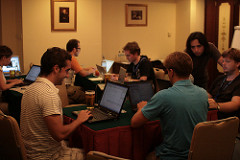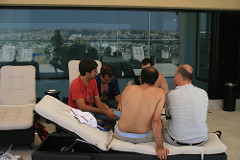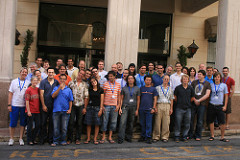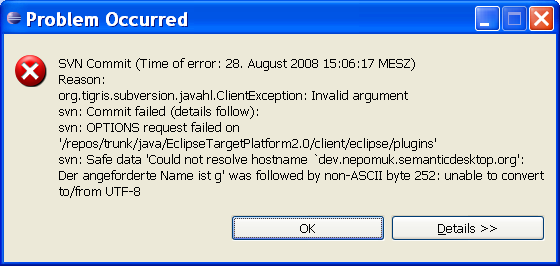Last week the NEPOMUK Social Semantic Desktop Summer School happened. A short summary.
First and most interesting, much material of the summer school is available in the wiki. Second, I uploaded a lot of pictures, and there are more on flickr tagged with nepomuksummerschool2008.
The students were great, and very capable. We had people from all over the world, to randomly pick three: Samur from Rio, Rigel from Chicago, Bernhard from Austria. Of course, as usual I had problems keeping the names and backgrounds :-/
After three days of teaching and hands-on sessions, the students had to do their own projects. Two projects were winning, Chatomuk, a semantified chat-client with tag-cloud and other niceties, and a project showing user interface designs. Both are missing some documentation on the wiki, but Gunnar and Bernhard are working to make Chatomuk downloadable.
It was tricky to present the material in a short time and also involve the students in learning, we tried out different teaching methods (frontal presentation, pen&paper creation of ontologies, hands-on code, directing the students to google quickly for the right info), I hope it was a good mix for everyone.
The school also had a social event, and we organized opportunities for socialising every evening.

A very nice social event was hacking the mini projects on thursday night:

I talked to many people about the idea to create a product from nepomuk that could be so good that people will pay for it and it was interesting to see the possibilities and ideas how to do that.
Well, there were so many coffee breaks, chats, discussions, I can’t write much more but say:
thanks for all the participants for attending – blog it (and ping me)!




